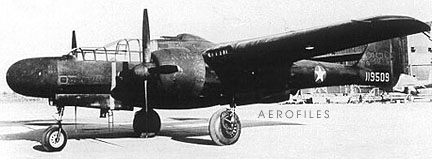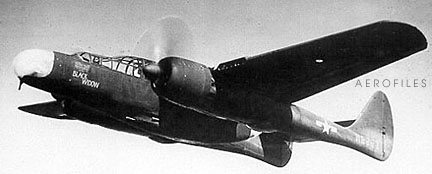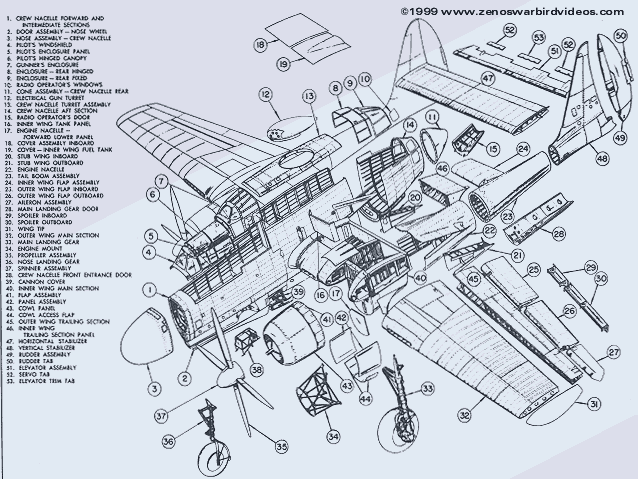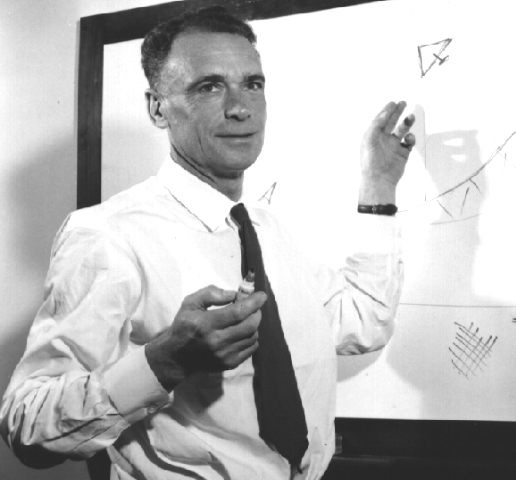Skip to comments.
The FReeper Foxhole Reviews USAAF Night Fighters at War ~ Part 1 of 3 - Jan. 16, 2004
http://www.usaaf.net/ww2/night/index.htm ^
| Stephen L. McFarland
Posted on 01/16/2004 4:07:06 AM PST by snippy_about_it
|

Lord,
Keep our Troops forever in Your care
Give them victory over the enemy...
Grant them a safe and swift return...
Bless those who mourn the lost.
.
FReepers from the Foxhole join in prayer
for all those serving their country at this time.

...................................................................................... ........................................... |
|
|
|
|
|
|
U.S. Military History, Current Events and Veterans Issues
 Where Duty, Honor and Country
Where Duty, Honor and Country
are acknowledged, affirmed and commemorated.
|

| Our Mission: The FReeper Foxhole is dedicated to Veterans of our Nation's military forces and to others who are affected in their relationships with Veterans. In the FReeper Foxhole, Veterans or their family members should feel free to address their specific circumstances or whatever issues concern them in an atmosphere of peace, understanding, brotherhood and support. The FReeper Foxhole hopes to share with it's readers an open forum where we can learn about and discuss military history, military news and other topics of concern or interest to our readers be they Veteran's, Current Duty or anyone interested in what we have to offer. If the Foxhole makes someone appreciate, even a little, what others have sacrificed for us, then it has accomplished one of it's missions. We hope the Foxhole in some small way helps us to remember and honor those who came before us.
To read previous Foxhole threads or
to add the Foxhole to your sidebar,
click on the books below.
|
|
|
|
|
|
Conquering the Night - Part One

Nightfighters at War
"Cut short the night; use some of it for the day’s business." -Seneca
The United States never wanted for recruits in what was, from start to finish, an all-volunteer night fighting force.
For combatants, a constant in warfare through the ages has been the sanctuary of night, a refuge from the terror of the day’s armed struggle. On the other hand, darkness has offered protection for operations made too dangerous by daylight. Combat has also extended into the twilight as day has seemed to provide too little time for the destruction demanded in modern mass warfare.
In World War II the United States Army Air Forces (AAF) flew nighttime missions to counter enemy activities under cover of darkness. Allied air forces had established air superiority over the battlefield and behind their own lines, and so Axis air forces had to exploit the night’s protection for their attacks on Allied installations. AAF night fighters sought to deny the enemy use of the night for these attacks. Also, by 1944 Allied daylight air superiority made Axis forces maneuver and resupply at night, by air, land, and sea. U.S. night fighters sought to disrupt these activities as an extension of daylight interdiction and harassment efforts. The AAF would seek to deny the enemy the night, while capitalizing on the night in support of daylight operations.
Airmen Claim the Night Skies
The first true night fighter aircraft were British, struggling to hunt down German Zeppelins lurking in the night skies over England in 1915. These slow behemoths were sitting ducks in daylight, so they were used primarily after dark. For six months British airmen struggled to find the Zeppelins and shoot them down. This effort exposed several problems: once notified, how to ascend and reach the enemy’s altitude before he flew out of range; how to find the enemy in a darkened sky; and, finally, how to knock him down. Technology soon provided answers, allowing R. A. J. Warneford to use aerial bombs to claim the first Zeppelin in June 1915. British night defenses exacted an increasing toll, claiming 79 of the 123 airships Germany built for the war.

The enemy then switched from Zeppelins to a bomber airplane offensive against England. At first striking by day, German Gothas and Giants soon sought the night’s protection from British defenses. What airmen lost in bombing accuracy by flying at night they more than made up in safety against enemy defenses. The night assault caught the public’s imagination, but caused no serious damage. British planes performed well against German bombers protected by machine guns and the dark; in fact, the night itself proved the greater danger. In nineteen night raids, the defense, guided by radio intercepts, ground observers, searchlights, and blind luck, claimed twenty-four invading bombers, while thirty-six others were destroyed in unrelated crashes.

Together, German bombers and airships claimed about 1,400 dead on the ground and nearly 3,400 injured, enough to threaten the British sense of pride and breach the insular protection previously afforded by the English Channel. Though the German aerial offensive hardly threatened the British war effort, it did force a diversion of eight hundred British fighters from the Western Front, where they were sorely needed. Though primitive, this first “Battle of Britain” set the stage for the aerial night fighting in the next war.

Conquering the Night through Research
Because of inadequate funding and official disinterest, night fighting became the responsibility of regular U.S. tactical squadrons during the interwar years. These units had enough problems preparing for day war, much less confronting the obstacles of darkness. Yet, despite minimal budgets, pioneering airmen still strove to conquer the night by developing blind-flying techniques, primarily at the Army Air Service’s Engineering Division at McCook Field, and later at the Army Air Corps’ Materiel Division at Wright Field, both near Dayton, Ohio.
The research of 1st Lts. Muir S. Fairchild and Clayton Bissell in the 1920s showed that night operations required a specifically designed aircraft with great speed and maneuverability and an unobstructed view for the pilot. Test flights revealed that pilots became disoriented when they lost sight of the ground and the horizon. Human senses contradicted aircraft instruments, while vertigo magnified a pilot’s confusion. The biggest problems were how to land and navigate at night. U.S. airmen tested electric landing lights and flares without success, though the tests did reveal the need for illuminated instruments and flame dampers for engine exhausts.
In 1928 Edwin Link’s ground trainer made practicing for night missions safer and less expensive, but did not solve the basic problem of flying into inky blackness. Intrepid airmen such as 1st Lts. James Doolittle and Albert Hegenberger attacked the problem of blind takeoffs and landings in what the New York Times called the “greatest single step forward in [aerial] safety.” Newly invented illuminated instruments-a specially designed artificial horizon, directional gyroscope, turn indicator, radio beacon, and barometric altimeter allowed Doolittle and Hegenberger to make blind flights from 1929 to 1932 that opened the night skies to military operations.

Jimmy Doolittle
At the end of this critical period, 1st Lt. Carl Crane published the first U.S. treatise on night flying, Blind Flying in Theory and Practice (1932). Soon the homing beacon indicator and radio compass made possible night navigation, and flying the air mail across the country during the 1930s gave Army airmen practical experience in flying at night. Late in the decade, U.S. bomber squadrons were practicing occasional night missions, including mock interceptions in which fighter (pursuit) aircraft were guided by searchlights on the ground.
Obvious to aviators was the seemingly insurmountable obstacle of finding another airplane in the vast emptiness of the night sky. If the opposing crew took basic precautions to “black-out” their aircraft, the optimal range of an intercepting pilot’s vision declined to 750 feet or less, though on especially clear nights with strong moonlight three-mile visibility was possible.

Night fighters needed assistance from the ground to bring them within visual range of their targets. Until 1938 this help came from searchlight crews lucky enough to illuminate an intruding aircraft and from acoustical locators using conical horns to focus incoming sound. There were also vain attempts to detect radio waves emitted by the spark plugs of aircraft engines or infrared radiation from engine exhaust gases. Tests at Fort MacArthur, California, in 1937 and in Hawaii in 1940 proved the futility of such efforts.
All this development seemed to make no difference. A new generation of bombers such as the Martin B-10 could fly higher, faster, and farther than any fighter in the world, convincing a whole generation of Americans to agree with erstwhile British prime minister Stanley Baldwin that “the bomber will always get through,” whether day or night. On its test flight the Boeing B-17 Flying Fortress set a world record, flying 2,270 nonstop miles at 252 miles per hour. Many airmen believed fighter aircraft could never intercept and shoot down such bombers in broad daylight, let alone at night. Since bombers could strike by day without peril, there would be no need for night missions and no need for a night-fighting capability. Only when the Second World War revealed these new bombers to be vulnerable to attack during the day and unable to “always get through” did the need for night fighters again become clear.

In the United States, air doctrine reinforced a disregard for night operations. At the Air Corps Tactical School, first at Langley Field, Virginia, and then at Maxwell Field, Alabama, the faculty developed daylight high altitude precision strategic bombing and advocated this concept as the offensive doctrine of the U.S. Army Air Corps. Large fleets of fast, well armed bombers would attack key chokepoints in an enemy’s industrial fabric by day-the most rapid, efficient, and least bloody means for defeating the enemies of the United States.
The revolution in bomber technology represented by the four-engine B-17 made axiomatic the belief that no defenses could stop such an attack. Brig. Gen. Oscar Westover expressed the conviction of most U.S. airmen when he declared that “no known agency can frustrate the accomplishment of a bombardment mission.” Norden and Sperry optical bombsights could locate precise industrial targets from four or five miles up under the proper conditions, but only during the day and in the absence of high winds and excessive cloud cover.
This strategic bombing doctrine and its advocates overwhelmed any airmen still concerned with defense and fighter operations, and encouraged the building of an air force committed to daylight bombing operations. Thus, the Materiel Division redirected its research in blind and night flying to the problems of aiming bombs through overcast. Defensive strategies reflected this emphasis on daylight precision bombing, and more defensive- minded airmen began to focus on the problems of daylight interception. Even the conflicts of the interwar period, including the Spanish Civil War, gave U.S. airmen no persuasive reasons to alter their thinking.
FReeper Foxhole Armed Services Links
 
   |
TOPICS: VetsCoR
KEYWORDS: armyairforces; freeperfoxhole; nightfighters; samsdayoff; usaaf; veterans
Navigation: use the links below to view more comments.
first previous 1-20 ... 101-120, 121-140, 141-160, 161-175 next last
To: CholeraJoe; SAMWolf; Professional Engineer; All
The USAF has owned the night ever since. Perfect segue for my Tidbit for Today.
The "Black Widows" exist today as the 421st Fighter Squadron based at Hill AFB, Utah, one of three fighter squadrons under the 388th Fighter Wing (one of Jen's former units!).

Excerpt from 421st FS history:
"When Iraq invaded Kuwait in August 1990, the 421st TFS found themselves facing armed opponents for the first time since Vietnam as it deployed to Southwest Asia in Support of Operation Desert Shield. The squadron once again returned to its proud combat heritage as a nighttime fighter squadron. Once open hostilities began in Operation Desert Storm, it became the first F-16 unit to fly the LANTIRN (Low Altitude Navigation and Targeting Infrared for Night) system in combat. Pilots dropped more than 2,000 tons of conventional munitions on strategic and tactical sites in Iraq and Kuwait during more than 1,300 combat sorties -- 1,200 of them at night, without combat losses or battle damage to aircraft.
121
posted on
01/16/2004 6:12:58 PM PST
by
Jen
(The FReeperette formerly known as AntiJen)
To: Victoria Delsoul
Hi Victoria! Hooray! TGIF!
122
posted on
01/16/2004 6:14:15 PM PST
by
Jen
(The FReeperette formerly known as AntiJen)
To: U S Army EOD; CholeraJoe; snippy_about_it; SAMWolf
Sorry but I have been embittered every since the Airforce left me a dud 500lb bomb in a pig pen in a leper colony to recover. Chappaqua or Hyannisport?
123
posted on
01/16/2004 6:19:52 PM PST
by
PhilDragoo
(Hitlery: das Butch von Buchenvald)
To: PhilDragoo
If it had been one of those, I would have armed it and left it there.
124
posted on
01/16/2004 6:22:46 PM PST
by
U S Army EOD
(Volunteer for EOD and you will never have to worry about getting wounded.)
To: Jen
Hi Jen, happy TGIF! How's Sasso doing?
125
posted on
01/16/2004 6:22:57 PM PST
by
Victoria Delsoul
(Freedom isn't won by soundbites but by the unyielding determination and sacrifice given in its cause)
To: Jen
Hey, nice squadron patch there. Thanks
126
posted on
01/16/2004 6:26:26 PM PST
by
Professional Engineer
(17Dec03~A privately financed, built and owned Spacecraft broke the sound barrier for the first time.)
To: Victoria Delsoul
Evening Victoria
127
posted on
01/16/2004 6:31:58 PM PST
by
SAMWolf
(I am Homer of Borg. Prepare to be... ooooohh, doughnuts!)
To: Jen
Thanks for the current history of the 421st, Jen.
128
posted on
01/16/2004 6:32:53 PM PST
by
SAMWolf
(I am Homer of Borg. Prepare to be... ooooohh, doughnuts!)
To: PhilDragoo
LOL! Pig = Chappaqua, Leper = Hyannisport
129
posted on
01/16/2004 6:34:16 PM PST
by
SAMWolf
(I am Homer of Borg. Prepare to be... ooooohh, doughnuts!)
To: Professional Engineer

Their current one's not bad either.
130
posted on
01/16/2004 6:35:54 PM PST
by
SAMWolf
(I am Homer of Borg. Prepare to be... ooooohh, doughnuts!)
To: Victoria Delsoul
Sasso has surgery planned next week to close his wound. It's been a rough 3 months for my furbaby, but he's doing well.
131
posted on
01/16/2004 6:37:01 PM PST
by
Jen
(The FReeperette formerly known as AntiJen)
To: Jen

Me-262B-1a/U1 Night Fighter
132
posted on
01/16/2004 6:42:27 PM PST
by
SAMWolf
(I am Homer of Borg. Prepare to be... ooooohh, doughnuts!)
To: Jen
Three months already, wow. Glad he's doing better, Jen.
133
posted on
01/16/2004 6:43:02 PM PST
by
Victoria Delsoul
(Freedom isn't won by soundbites but by the unyielding determination and sacrifice given in its cause)
To: Jen

That's CholeraJoe on the right assuming command of the 1st Strategic Hospital, Vandenberg AFB, CA, 2 July 1989.
After completion of the Aerospace Medicine Primary course in 1982, he returned to Eglin AFB, FL where he flew with the 55th Aerospace Rescue and Recovery Wing and the 20th Special Operations Squadron of the 1st Special Operations Wing at nearby Hurlburt Field.
After temporary duty in Honduras in 1985, and several tours with Air Force Systems Command and Strategic Air Command, he assumed command of the 1st Strategic Hospital, Vandenberg AFB, CA on July 2, 1989. During this assignment he flew numerous missions with Detachment 8, 38th Aerospace Rescue and Recovery Squadron in support of missile launches, range safety, night recovery, and over-water rescue missions.
CholeraJoe's Military Honors include the Meritorious Service Medal with 3 oak leaf clusters, the Air Force Achievement Medal with one oak leaf cluster, the National Defense Service Medal with one bronze star, the Southwest Asia Service Medal, the Humanitarian Service Medal, the Armed Forces Expeditionary Medal, the Air Force Outstanding Unit Award with 2 oak leaf clusters, the Air Force Organizational Excellence Award with one oak leaf cluster, the Air Force Recognition Ribbon and the Air Force Small Arms Expert Marksmanship Ribbon with one bronze star.
CholeraJoe's FR homepage
CJ as an Officer and a Gentleman. I've devolvded since then.
134
posted on
01/16/2004 7:34:58 PM PST
by
CholeraJoe
(I'm a Veteran. I live in Montana. I own assault weapons. I vote. Any questions?)
To: CholeraJoe
CJ as an Officer and a Gentleman. I've devolvded since then. ~~~~~SALUTE~~~~~ to a superior officer (whether or not you are a gentleman now makes no difference to me - you served honorably therefore you deserve a salute...)! ;-)
135
posted on
01/16/2004 7:44:26 PM PST
by
Jen
(The FReeperette formerly known as AntiJen)
To: snippy_about_it; SAMWolf; colorado tanker; E.G.C.; Victoria Delsoul; Light Speed; Darksheare
A E R O F I L E S
Northrop XP-61A [41-19509] (Northrop)
XP-61 1942 = Two 2000hp P&W R-2800-10; ff: 5/21/42
(p: Vance Breese). POP: 2 prototypes [41-19509/19510].

Northrop YP-61A [41-18876] (number shown as "118867", likely a sign-painter's error) (Northrop)
YP-61 1943 = R-2800-10. POP: 13 for service testing [41-18876/18888].

Northrop P-61A [42-5507] (Northrop)
P-61A, F-61A 1943 = Production series; two 2250hp P&W R-2800-65; span: 66'0" length: 48'11" v: 369/222/x range: 1450 ceiling: 33,100'.
Only the first 37 had top turret and three-man crew; first 45 with R-2800-10, the rest with 2250hp R-2800-65.
POP: 200 [42-5485/5934, -39348/39397], included suffix variants of A-1 with R-2800-10, A-5 and A-10 with water injection, and A-11 with drop tanks.
From this lot 12 were transferred to USMC in 1945 as F2T-1.

Northrop P-61B-25 Underside and gear [43-8238] (Northrop)
P-61B, F-61B 1943 = R-2800-65; span: 66'0" length: 49'7" load:
16,300# (>7700#) v: 366/200/x range: 1900 ceiling: 33,100', First 200 without top turret.
POP: 450 42-39398/39757, 43-8231/8320], included suffix variants from B-1 to -25; included long-nose model; length: 57'7".

Northrop P-61C [43-8323] (Northrop)
P-61C, F-61C 1945 = Final production version, with 2100hp turbosupercharged R-2800-73.
POP: POP: 41 [42-8321/8361], of which 36 were converted into F-15A in 1945.

Northrop P-61E [42-39549] (Northrop)
XP-61E 1945 = 2p long-range escort fighter; 2100 hp R-2800-65; length: 49'7" load: 18,831# v: 376 range: 2250.
POP: 2 conversions from P-61B minus radar turret and with side-by-side seats under a bubble canopy [42-39549, -39557].
The first was converted to XF-15, the latter was lost in testing.
Northrop P-61B Black Widow "Snuffy Smith" / Monogram 1/48

AI Mk X; RAF ARI 5570; US SCR 720
P-61 Restoration Mid Atlantic Air Museum
More Neat P-61 Stuff!




Northrop P-61 Black Widow

Edward George Bowen 1911-1991
The key to the P-61's success in WW II was the Western Electric SCR-720 airborne intercept (AI) radar. Army Air Force censors generally whited out such details. When deployed in combat, the Widow's nose cone was opaque or painted over to conceal the AI unit. The SCR-720 featured a 10-cm dish with a range of 6.5 miles; the unit was extraordinarily difficult to jam.
The Tizard Mission
In August 1940 Bowen left the UK as one of seven members of a Mission, led by Sir Henry Tizard, to disclose recent British technical advances to the USA and Canada. Bowen's job was to tell them all about British radar He took with him not only information on all existing and projected equipment, but also an early sample of the cavity magnetron, the essential and highly secret key to the development of centimetre-wave radar that had just been invented by J.T. Randall and H.A.H. Boot at Birmingham University.
Following discussions with the Tizard Mission, the US made the important decision that the development of metre-wavelength radar should be the responsibility of the Armed Services, and that the development at. centimetre wavelengths should be the responsibility of a special Microwave Committee of which Dr Alfred Loomis was appointed Chairman.
As far as metre-wave radar was concerned Bowen, together with other members of the Mission, visited the various laboratories of the Armed Services telling them about developments in the UK; in particular he told them about airborne radar and arranged for demonstrations of ASV MkII, AI Mk IV and IFF (Identification Friend or Foe) equipment in the air. However most of his considerable energy and enthusiasm was devoted to helping them develop centimetre-wave radar. Ever since the days of Bawdsey Manor he had urged that work should be done on shorter and shorter wavelengths so that radars could use narrow beams; an airborne radar, for example, might use a narrow beam to eliminate the returns from the ground that limited the maximum range of AI at metre-waves.
With remarkable speed the Microwave Committee set up a special laboratory, the Radiation Laboratory at MIT, for the development of centimetre-wave radar, and Bowen collaborated closely with them on their programme. His advice was particularly valuable in the early stages; for example, he wrote the first draft specification for the development of their 10cm AI.
So successful was the programme at the Radiation Laboratory that the first experimental airborne 10cm radar was tested in a Douglas B18, with Bowen on board, on 27 March 1941, only seven months after the Tizard Mission had arrived in the USA. Their first 10cm AI (SCR720), accompanied by Bowen, was demonstrated in the UK in August 1941 and later became known as AI Mk IX.
In the course of the next year the Radiation Laboratory grew in size and soon became the most important and productive radar laboratory in the USA; by the end of the war the staff numbered about 4,000.
The Tizard Mission, in which Bowen played such a large part, was highly successful. It drew the attention of the Americans to the importance of radar as a weapon of war, introduced them to airborne radar, accelerated the development of centimetre-wave radar by giving them the cavity magnetron and, owing much to Bowen, helped them to set up the highly successful Radiation Laboratory.
136
posted on
01/16/2004 7:47:12 PM PST
by
PhilDragoo
(Hitlery: das Butch von Buchenvald)
To: SAMWolf

Where have these guys been? Don't they know everyone else in Hollywood is saying we're all going to die from global warming?
Interesting info about Army night fighters. I've read some about Navy night fighters in the Pacific but hadn't ever heard of anything from Europe about that.
To: U S Army EOD
I heard it's the golf course that gets built first on an air base.
To: Jen
Thanks, and back at you with a returned salute!
139
posted on
01/16/2004 7:52:32 PM PST
by
CholeraJoe
(I'm a Veteran. I live in Montana. I own assault weapons. I vote. Any questions?)
To: GATOR NAVY
They were active in the Pacific also. They used a modified two seat P38 with radar.
140
posted on
01/16/2004 7:56:03 PM PST
by
U S Army EOD
(Volunteer for EOD and you will never have to worry about getting wounded.)
Navigation: use the links below to view more comments.
first previous 1-20 ... 101-120, 121-140, 141-160, 161-175 next last
Disclaimer:
Opinions posted on Free Republic are those of the individual
posters and do not necessarily represent the opinion of Free Republic or its
management. All materials posted herein are protected by copyright law and the
exemption for fair use of copyrighted works.
FreeRepublic.com is powered by software copyright 2000-2008 John Robinson


















